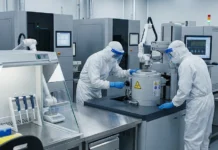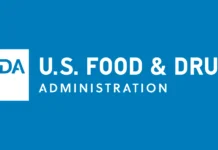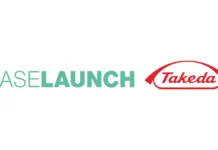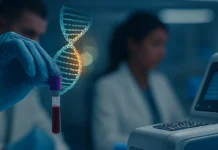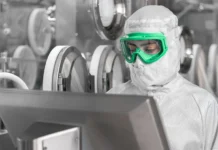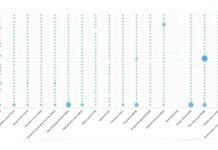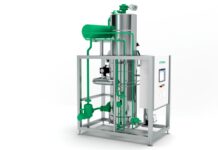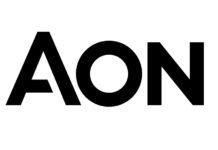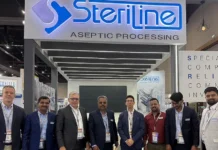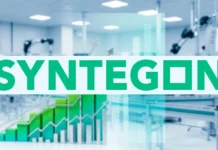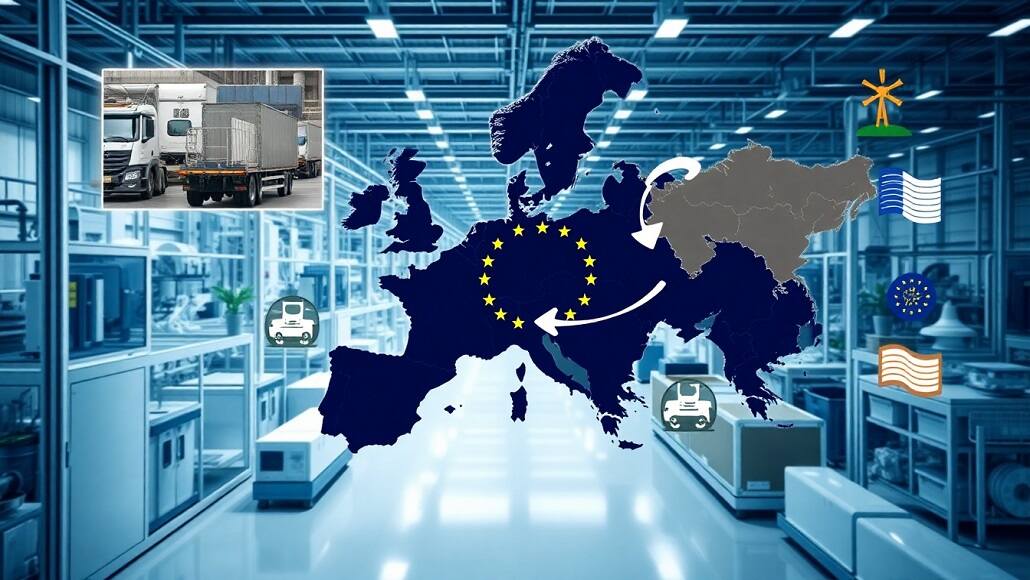The COVID-19 pandemic went on to expose crucial susceptibility within the global pharmaceutical supply chain, especially concerning active pharmaceutical ingredients, which are the foundational chemical compounds when it comes to modern medicines. As the pandemic unfolded, Europe went on to find itself in a very grappling situation where there were shortages of essential drugs along with API, thereby spotlighting the continent’s heavy dependence when it comes to imports, especially from Asia. Since then, there is a profound transition that has been underway – industry leaders, governments, and policymakers throughout Europe have revisited their sourcing plans, advocated for reshoring, and also set themselves ambitious targets when it comes to API independence. Let us explore the trends, the strategic rationale that drives this, and the continent’s evolving role when it comes to being a key player as far as the global pharmaceutical supply chain is concerned.
The dependence on API—how did Europe get there?
It is well to be noted that for decades, economic efficiencies have driven pharmaceutical companies to offshore API production primarily to countries like India and China. By 2019, more than 70% of the global API production capacity was focused in Asia, with China alone comprising almost half. European manufacturers went on to face an escalating cost as well as strict environment and safety standards and hence ceded ground to their Asian counterparts, thereby resulting in a dramatic dip in domestic API manufacturing sites from over 2000 in the 1990s to less than 600 in 2024.
The repercussions of this were starkly visible in the early COVID-19 waves. Export restrictions, border closures, as well as a sudden spike in demand, triggered an unmatched shortage of analgesics, antibiotics, and critical care medicines. As per the European Medicines Agency (EMA), more than 90 medicinal products went on to experience a very acute supply shortage in 2020-2021.
Reshoring along with API independence – policy as well as market drivers
1- Policy stimulus along with strategic autonomy
Reshoring, which is the relocation of manufacturing back to home markets, has gone on to emerge as a focal point in Europe’s pharmaceutical resilience strategy. The 2022 pharmaceutical strategy by the European Commission and initiatives such as the health sovereignty program by France and the API resilience fund from Germany have gone on to mobilize billions when it comes to incentives, infrastructure upgrades, and subsidies. By May 2025, a minimum of 18 EU member states will have already launched the public-private partnerships that are aimed at either bringing back or, rather, scaling up the production of API.
| Country/Initiative | API Reshoring Initiative Summary |
| France | €1.5 billion “Health Sovereignty” for domestic API plants |
| Germany | €1.2 billion Resilience Fund (focus: antibiotics, analgesics) |
| Italy | €500 million in co-investments for paracetamol, heparin |
| EU Commission | €3.2 billion in competitive grants and research alliances |
-
Market trends along with industry response
Although the policy support happens to be really critical, industry dynamics are also transitioning. The global contract development and manufacturing organization market, in which Europe happens to be a very important player, is anticipated to grow at a CAGR of 11.5% between now and 2032. The European API manufacturing sites have also increasingly adopted the digitalization framework, consistent manufacturing tech, and green chemistry, helping them to compete when it comes to quality, dependence, and sustainability rather than only cost.
Case study: The 2024 investment by Sanofi in its Vertolaye plant in order to manufacture major antibiotics as well as painkillers goes on to exemplify this trend. The plant makes optimum use of advanced process automation along with energy-efficient systems, thereby reducing the functional cost while at the same time meeting the sustainability benchmark rolled out by the EU.
Sourcing strategically after Covid—a new shift
Right from just in time to just in case
Prior to the pandemic, the pharmaceutical supply chains went to prioritize lean inventory as well as global sourcing. These were the principles that decreased cost and at the same time sacrificed the resilience. In 2025 now, just in case sourcing strategies, which were the largest stockpiles, regionalization, and dual sourcing, are the fresh norm.
Supply chain mapping as well as transparency
It is well to be noted that the European regulators now require the companies to map their overall API supply chains, pinpoint their weak nodes, and at the same time identify high-risk dependencies. This kind of transparent initiative, which is led by the EMA as well as major national agencies, has gone on to help with faster responses to shortages along with a more targeted investment when it comes to reshoring.
ESG giving a competitive edge
Europe’s push when it comes to greener and more transparent supply chains is indeed altering the competitive spectrum. By 2025, environmental compliance along with traceability are no longer very nice to have but kind of essential needs for suppliers. The new green API standards, which are all set to get completely prevented by 2027, are anticipated to raise the production cost by a minimum of 8%. However, they are widely seen as a vital element when it comes to offering long-term resilience and consumer trust.
The European API industry – 2025, a snapshot
As per the latest estimates by EFPIA, Research and markets, May 2025 –
- The European API market size is $21.7 billion in 2024.
- The anticipated growth between 2025 and 2032 will be at a CAGR of 7.3%.
- The number of European API manufacturing sites in 2025 will be up at 670, which is a rise of 12% from 2022.
| API Category | 2024 Capacity (tons) | 2032 Projected (tons) | CAGR (%) |
| Antibiotics | 13,500 | 22,800 | 6.8 |
| Analgesics | 6,200 | 9,700 | 5.8 |
| Oncology APIs | 2,300 | 5,600 | 11.7 |
| Cardiovascular | 4,700 | 7,800 | 6.7 |
| Biologics | 1,600 | 4,300 | 12.9 |
The lessons that are learned from the global pharmaceutical supply chain disruptions
COVID-19 as well as geopolitics
In the last five years, the pharmaceutical sector has gone on to face a succession of disruptions – pandemic, trade wars, as well as regional conflicts. Every event has gone on to amplify the risk that is inherent in overdependence when it comes to a single market. For instance, China’s export restrictions when it came to certain APIs within the pandemic and India’s 2024 export curb on paracetamol demonstrated how the global flows can be interrupted quickly.
Ukraine war along with Middle East tensions
The conflict in Ukraine, along with the recurring instability when it comes to the Middle East, has further demonstrated energy and logistics vulnerabilities. European manufacturers have gone on to respond by diversifying their energy sources, enhancing their logistics redundancy, and investing when it comes to local production of major intermediates.
The strategic sourcing – balancing global integration with independence
While there happens to be a clear drive when it comes to API independence, European policymakers along with industry executives go on to recognize that complete autarky is not realistic, and also it is not economically desirable. The stress rather should be on strategic resilience by making sure of sufficient domestic and friendly capacity for critical APIs, while at the same time, maintaining an open trade along with innovation links across the world.
What is the future outlook, and what are the opportunities and challenges it presents?
When it comes to opportunities, we can divide them into three parts: innovation, resilience, and market growth.
In terms of innovation, the focus of Europe on advanced manufacturing as well as green chemistry is indeed positioning it as a leader when it comes to sustainable API production. When we talk of resilience, stockpiling and sourcing make Europe much less susceptible to global shocks. In terms of market growth, as the global demand for generics as well as biologics continues to rise, Europe’s capacity expansion is indeed timely.
When it comes to challenges, we can divide them into cost competitiveness, skilled labor, and regulatory complexity. Asian supplies still dominate when it comes to price, thereby pressuring European firms to either innovate or automate. Recruiting as well as training the next generation of talent when it comes to high-tech manufacturing still remains an uphill task. Stringent environmental as well as traceability regulations, which are also essential, raise the cost along with compliance burdens.
The evolving role of Europe
It is well to be noted that the journey of Europe from being in a position of dependence to one of greater self-dependence in API, which is on the cards, however, is still far from complete. The reshoring moves, which is catalyzed due to pandemic echoes as well as ongoing geopolitical challenges, has gone on to mobilize unprecedented investments. In addition to policy focus by mixing innovation, strategic autonomy, and sustainability, Europe is indeed shaping not only its own pharmaceutical spectrum, but it also is influencing the worldwide norms when it comes to resilience and transparency. As we happen to approach 2032, the role of Europe as both a market and a manufacturing hub when it comes to API is anticipated to strengthen due to robust policy frameworks, sector innovation, and fresh commitment when it comes to public health security.



